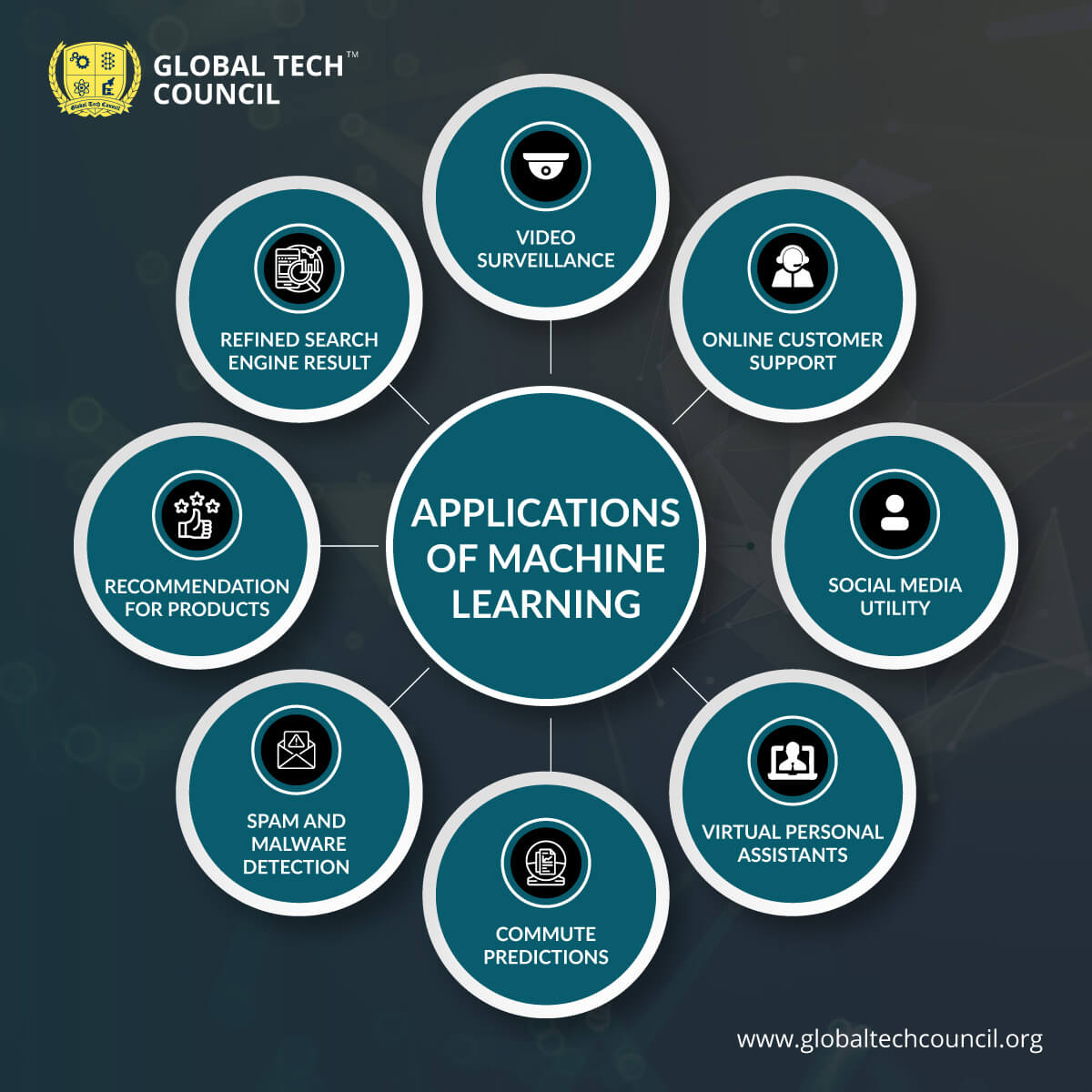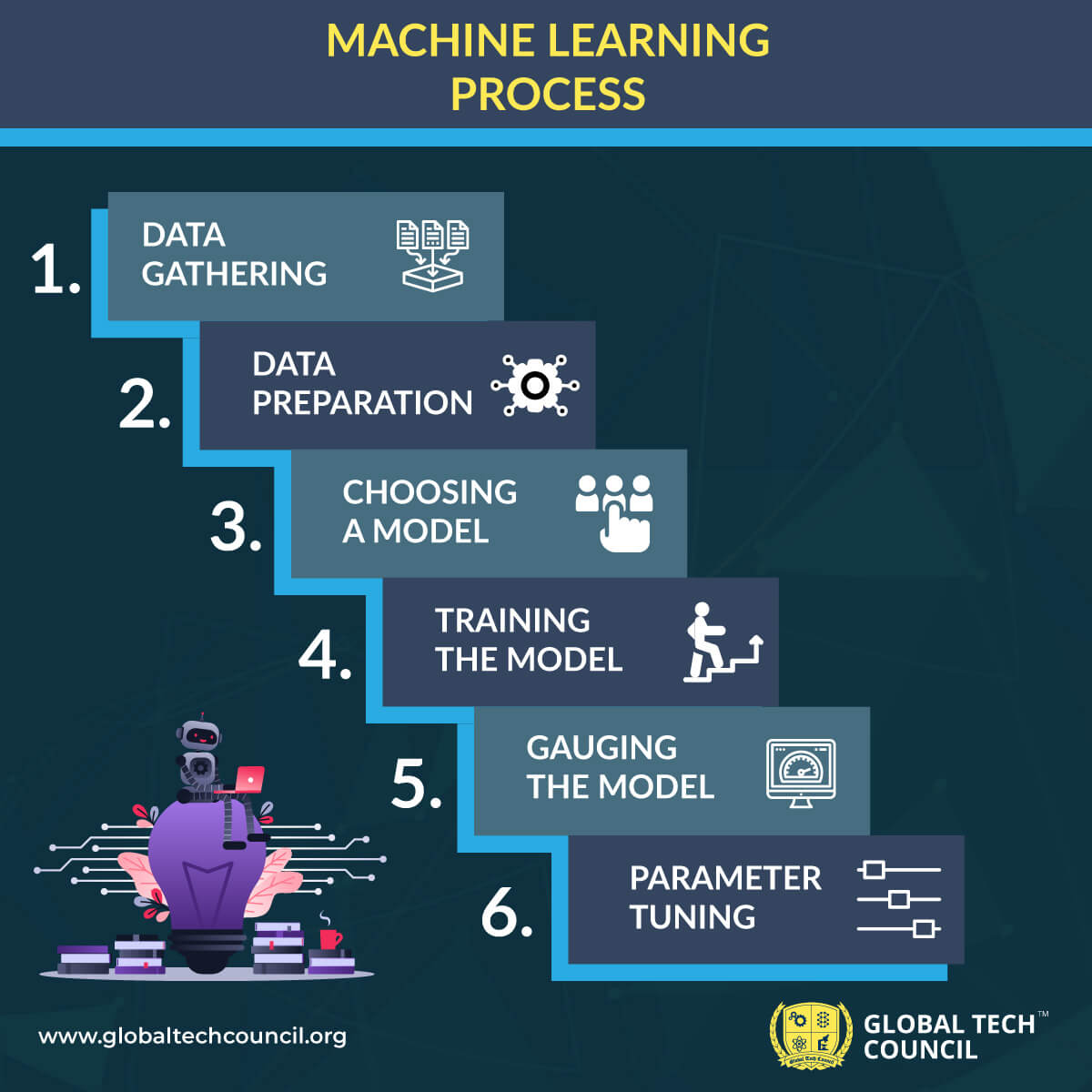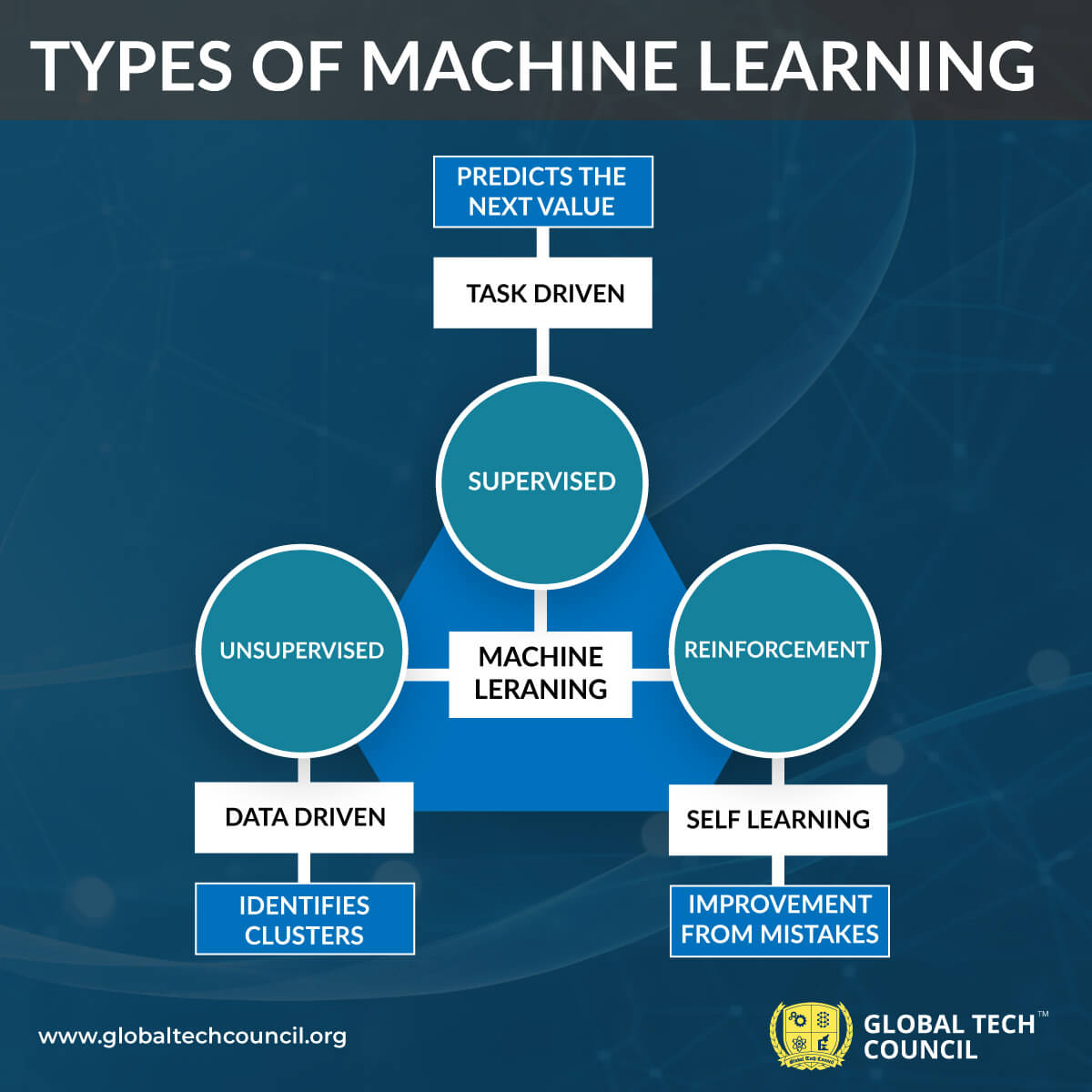Machine Learning is an element from the Artificial Intelligence universe. Machine Learning has opened up windows to the transformative future that lies ahead of us. Naturally, there is a surge in people taking up machine learning courses and machine learning certifications all over the world due to its immense popularity and usefulness.
- What is Machine Learning?
- Applications of Machine Learning
- The Machine Learning Process
- Benefits of Machine Learning
- Limitations of Machine Learning
- Different types of Machine Learning
- Trends in Machine Learning
- Popular Tools of Machine Learning
So if you are a machine learning enthusiast, then jump right in because this will prove to be a very interesting and comprehensive guide for you.
What is Machine Learning?
Machine Learning refers to the scientific study and creation of statistical algorithms that are used by computer systems to perform specifically designated tasks. The computer performs them without giving any explicit instructions because it relies on patterns and inferences instead. Machine Learning is actually considered to be a subset of artificial intelligence training. Machine learning for beginners starts from the basics of coding and understanding data sets.
Applications of Machine Learning
The surge in Machine Learning courses everywhere is due to proven outcomes that come with this technology. Machine Learning is helping provide solutions to many challenging issues.
-
Social Media Utility
Machine Learning is being utilized to give you personalized news feed and displaying more relevant advertisements. The simple feature of suggested friends or friends you may know is analyzed through user experiences. Moreover, facial recognition in uploaded pictures or tagging is another complicated machine learning algorithm because it extracts useful information from images and videos.
-
Virtual Personal Assistants
Whether it’s Siri assisting you or Alexa, or even Google Home, all of these are virtual personal assistants. Machine learning training is what makes them smart as they gather information and refine it based on your previous interactions with them. Afterward, this collected data is further analyzed to give you suggestions that might be of your personal preference.
-
Commute Predictions
A habit everyone’s developed without realizing is checking the traffic and routes before leaving the house. A live updated feed is all thanks to those who have a machine learning course and are working towards better algorithms that predict the time to be taken on a route. In fact, Uber uses machine learning to estimate the rate of a ride based on demand.
-
Spam and Malware Detection
The traditional spam filtering methods fail when spammers use newer methods every day. Machine learning helps system security programs to understand the coding pattern behind any malware. Thus making it easier to detect them. Spam filtering techniques like C 4.5 Decision Tree Induction and Multilayer Perceptron are mechanized better because of machine learning.
-
Recommendation for Products
It’s not magic that when you look at a product, you receive suggestions which suit your taste, and you might even end up buying that suggested product. Machine Learning algorithms ensures that you have a personalized shopping experience online on the basis of your past interactions with the website/application. It tracks the products you saw, liked or disliked, etc.
-
Refined Search Engine Results
Machine learning algorithms work at the backend of a search engine to give you precise results. It tracks the results that were clicked upon and how long you, as a consumer of that information stayed on that page. If you don’t click on the results, the algorithm understands that the results were irrelevant. Whether it’s Google, safari, or any other search engine, all of them use machine learning.
-
Video Surveillance
As video surveillance has picked up in the last few years, it is not humanly possible to monitor multiple videos feeds with accuracy. This issue is solved by machine learning-powered video surveillance systems that detect frequent faces, the motion of those in the video, or lack thereof, etc. It automatically alerts the human supervisor who can take steps to prevent any mishaps before they happen.
-
Online Customer Support
Nowadays, websites generally have a 24×7 support system available online. However, when you message them, it’s usually a bot that gives you replies picking up information from the website to resolve your issue. But if it’s not resolved, then the bot connects you with a human customer service representative. These chatbots are powered by machine learning.
The Machine Learning Process
Organizations are constantly researching ways to improve the implementation of Machine Learning models. The process of machine learning application has seven necessary steps.
-
Data Gathering
This is the most important step in machine learning. The quality and quantity of the data collected will determine how good the end-result of the predictive model turns out to be.
-
Data Preparation
The data is then prepared for being used in a suitable way for machine learning training. The data is randomized for training purposes and better results. The data is also split into two parts, one for training and one for evaluation later.
-
Choosing a model
The next step is choosing a model depending on the features. It could be image-based, sequence-based, text-based, or numerical based, etc.
-
Training the model
This is a vital step in machine learning, i.e., training the model. All the data is used to train the model for it to become smarter and provide better predictions.
-
Gauging the model
The best way to evaluate any model is through testing. The data set aside while preparing data is used to assess the model as it’s a fresh piece of data the model has never worked with before. This metric can help us understand how it’ll perform in real-time.
-
Parameter tuning
At this stage, a lot of parameters can be fine-tuned than the initial step. Any assumptions we might want to fix or any values we might want to alter can be done at this stage.
-
Prediction
This is the last stage in machine learning for why the whole process happened. To find an inference or predict a result that is beneficial to the organization.
Benefits of Machine Learning
Machine Learning is adding a lot of benefits to businesses by the functions it performs. Not only does it help in key insights, the algorithm gets smarter each day with accurate data.
-
Spotting Trends
Machine learning helps to identify patterns that might get overseen by humans. For example, a customer’s browsing history or purchasing behavior can help inappropriate suggestions and advertisements. This brings in better leads conversion for the organization.
-
No Babysitting
With machine learning, there is no need for any type of human intervention. This is because the machines are capable of learning and improving the algorithm on their own. Moreover, it helps to make better-updated predictions.
-
Constant Enhancement
As the machine learning algorithms mature, so does their efficiency improve. The more data that is fed to them, the more accurate their predictions become. Hence there’s always a scope for betterment.
-
Varied data-handling
With machine learning training, algorithms become capable of managing multidimensional and multi-variety data. They’re even capable of doing this in dynamic and unknown environments.
Limitations of Machine Learning
No technology is perfect and there’s always scope for improvement for better outcomes. Machine Learning has certain limitations that can be overcome in the near future with the right kind of research.
-
Acquiring Data
Machine learning models are dependent on large sets of good quality and unbiased data for training. It’s difficult to acquire accurate and inclusive data most of the time. Sometimes the training of the algorithm has to be stopped until new data for training is being generated.
-
Copious Amount of Time
Machine learning algorithms require a lot of time to develop a learning curve on their own, where they start fulfilling their purpose. To achieve accuracy, they also need substantial computational resources and power. Only when the algorithm has learned enough, can it give outputs with relevant results.
-
Interpreting Results
To understand the results, you should choose relevant algorithms that suit your purpose. The results generated by the algorithms must be interpreted correctly.
-
Prone to Errors
Machine learning means training algorithms with data sets. But if the data set is small or non-inclusive, then it can lead to multiple errors in the output. It means that there will be skewed results with biased predictions. Most of the time, these errors go undetected.
Types of Machine Learning
Machine Learning algorithms are also of different types. Primarily they are clubbed under three major heads.
-
Supervised Learning
The first type is supervised learning, where the machine is given a data set with prior knowledge of how the accurate result would look like. In supervised learning, there is a clearly established relationship between input and output.
Supervised learning happens through two types of models. These are regression and classification. Regression is usually used for discovering the relationship between variables and forecasts. The models in regression give a prediction value that is based on independent variables. Regression models are used to predict real-valued outputs. On the other hand, classification refers to segregating the final output into different classes. It becomes a classification issue if the data that has been input is discrete in any way.
-
Unsupervised Learning
In unsupervised learning, the machine is given problems to solve without an idea of how the results might turn out to be. Sometimes, even the effect of the variables is unknown in unsupervised learning. In that case, we can obtain the composition of the data by following the practice of clustering it on common variable relationships. This way, the values in one group are similar to each other on certain grounds than the other group.
-
Reinforcement Learning
Reinforcement Learning refers to taking relevant steps for maximizing the rewards in any particular situation. This is utilized by different software and machines, and it enables them to find the most suitable solution or path to take in a specific situation.
Unlike supervised learning, where the data training happens on the basis of a specific output, in reinforcement learning, there is no correct answer. Without a training data set, the machine learns from its own mistakes.
Trends in Machine Learning
Machine Learning is capable of transforming business outcomes. Some of the most notable contributions of this technology are discussed below.
-
Unwanted Data
With the amount of data we produce every second of the day, a lot of it is also of no use. Saving such data with the help of cloud computing becomes a waste of resources and an added expense. In such situations, machine learning can help in organizing and sorting data, which might be of no use to the organization and deleting such information.
-
Frameworks in Neural Networks
Machine Learning is solving one of the most significant issues faced by artificial neural networks. There are a variety of options on which neural networks can be trained, like Apache MXNet, PyTorch, TensorFlow, etc. But once they’re trained on a particular framework, it’s complicated to integrate it onto another. With the help of machine learning, Open Neural Network Exchange (ONNX) allows using trained neural network models across different frameworks. ONNX was developed by Microsoft, AWS, and Facebook together.
-
Mechanized Machine Learning Solutions
Not all organizations hire machine learning experts to navigate through the applications of machine learning in the organization. Tools like AutoML that mechanize the whole process of training custom ML models are gaining prominence due to their automated nature. Even those with a non-machine learning background can handle the complex training of ML models with the help of automated tools. Having said that, specific parameters do require expertise for any type of changes in machine learning training.
-
The intersection of IoT & ML
All the data that is collected by the Internet of Things(IoT) powered devices is supported by machine learning as it helps to mine these humungous amounts of data for actionable results. This data collected by IoT devices is also used to train machine learning models that give outputs of practical results to be implemented by the IoT devices. This enhances an organization’s business models and services offered along with improved revenue-generation.
-
Natural Language Processing (NLP) Assistance
Machine learning is revolutionizing the process of natural language processing because it focuses on direct interaction, conversation, and understands what the user is expressing. Chatbots, in particular, are giving that human touch to all communications with customers, often improving the customer experience. And that’s not all because, through NLP, the organization can gather relevant details about the buyer like their choices, buying habits, sentiments, etc. to analyze market trends in a better way.
Popular Tools Used for Machine Learning
There are different types of machine learning tools available online. Here is a table that outlines the most popular ones. All of these are free tools that are available for your perusal to learn.
Conclusion
We hope that this article helped to enhance your knowledge about Machine Learning or helped you find the information you were looking for. If you want to learn more, you can sign up for a Machine Learning Certification that can give you in-depth knowledge about the techniques, data mining, statistical pattern recognition techniques, etc.




Leave a Reply